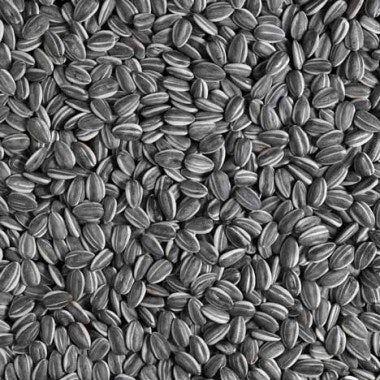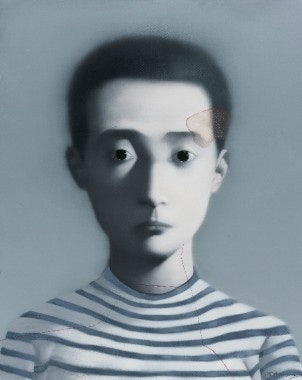Mei Moses All Art index Beat Total Return Of S&P 500 Index By About 9 Percentage Points In 2011#
A roundup of news from the Chinese art world, where domestic collectors are expected to continue flocking to art as an investment amid rising inflation and a shaky property market in 2012:
Ai Weiwei’s Sunflower Seeds Make US Debut At Mary Boone Gallery In New York#

15 months after making their global debut at London's Tate Modern Turbine Hall, Ai Weiwei's Sunflower Seeds exhibition has hit the United States for the first time, going on display at Mary Boone Gallery in New York. Though significantly smaller than the first London display, Ai's sunflower seeds -- millions of which were produced by 1,600 artisans in the Chinese town of Jingdezhen -- attracted an impressive crowd on their first weekend in New York. From the New York Observer:
The disparate groups circumambulated the pile, marveling at the display. Some sat with their Nikons snapping pictures for an NYU photography class, while others meandered around the shock of porcelain pods. A guard kept a watchful eye on the crowd, glaring suspiciously when guests edged to close to the work.
We encountered into Jim Oliver, the gallery’s director, who explained the symbolism underlying the exhibit. “The sunflower seeds are kind of like a metaphor for people,” he said. “In a way each one of those kind of symbolizes an individual. And if you look at them, they’re all different. They’re all unique but they look like they are,” he said.
We asked Mr. Oliver about the installation process. The four million ceramic seeds, he explained, were shipped in one-ton bags on palates from China. It took a full day to arrange the seeds in the gallery.
...
We soon noticed Mary Boone herself, sporting a purple skirt and matching jacket, chatting with guests in a corner of the stark, seed-filled room. “I met Weiwei at documenta, and I knew I wanted to show his work,” she told us. She described the artist as “very humorous and smart, very humble and soft spoken.” The geometric arrangement of the seeds was, she explained, stipulated directly by Mr. Ai himself. “We put it exactly in the format the artist specified. When I saw him this summer in Beijing, he had said exactly how it needed to be,” Ms. Boone said. Asked if she was concerned about people taking the seeds, she laughed. “That’s why we have the guard,” she said off-handedly.
Chinese Demand Helps Art Market Beat Equities For Second Consecutive Year#

Fueled by increased buying by new Chinese collectors, and the strong draw of blue-chip Western artists like Andy Warhol, last year the art market outperformed stocks for the second consecutive year, the FT writes today. According to the Mei Moses All Art index, which measures art returns based mostly on artwork sold in New York and London, last year's index achieved the largest-ever lead over the S&P 500 index of US equities, coming in at 9 percentage points higher. Altogether, the art market returned 11 percent to investors in 2011. As the FT notes, the Mei Moses index has beaten the S&P 500 in six of the last 10 years, returning an annual rate of 7.8 percent, over only 2.7 percent for the S&P.
According to Philip Hoffman, chief executive of the Fine Art Fund Group, China's new generation of art collectors -- driven into the market by higher inflation, few alternative investment options, shaky property and stock markets in China, and a desire to "repatriate" traditional lots at auction -- proved instrumental to the 20.6 percent rise in Chinese works last year. Said Hoffman, “With China there is massive wealth. And the new wealthy want to show off their prized works to friends. It doesn’t take many to cause a surge in prices.”
Look for wealthy Chinese collectors to keep turning to art in 2012, though the rapid pace with which they've learned about the market means they'll be far more particular than in previous years. As Reuters noted last month:
While stocks on the S&P 500 have outperformed Western art over the past 25 years, according to Mei Moses data, top Chinese and Asian art is still comparatively cheap compared with Western impressionists or American contemporary art. A Mei Moses index for traditional Chinese art showed a 24 percent jump in the first three quarters this year.
"The confidence in the Chinese contemporary art market remains high despite art market confidence dropping sharply in the U.S. and European contemporary market," Anders Petterson, head of art research consultancy ArtTactic, told Reuters.
Chinese Art Exhibition Marks 40 Years Of Sino-Japanese Diplomatic Ties In Tokyo#

Marking 40 years since the establishment of formal diplomatic relations between China and Japan in 1972, 200 pieces of Chinese art have gone on display at the Tokyo National Museum. Much like the "Forbidden City at the Louvre" exhibition, which wraps today in Paris, pieces in the Japan exhibition were chosen from the nearly 2 million items stored in Beijing's Palace Museum.
Among the priceless pieces included in the exhibition are "China's Mona Lisa," the Song Dynasty masterpiece "Along the River During the Qingming Festival" by artist Zhang Zeduan (1085–1145). The program runs through January 19, while "Along the River During the Qingming Festival" will remain on view through the 24th.
Tokyo National Museum#
13-9 Ueno Park, Taito-ku,
Tokyo, 110-8712, Japan
Tel: 81-(3)-5405-8686
